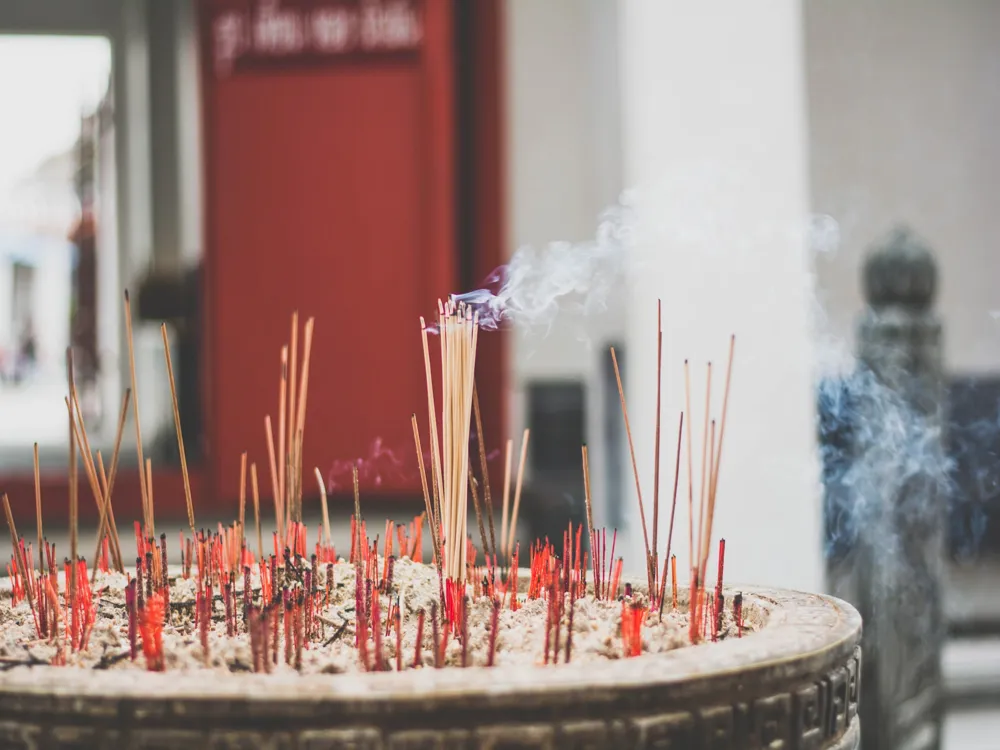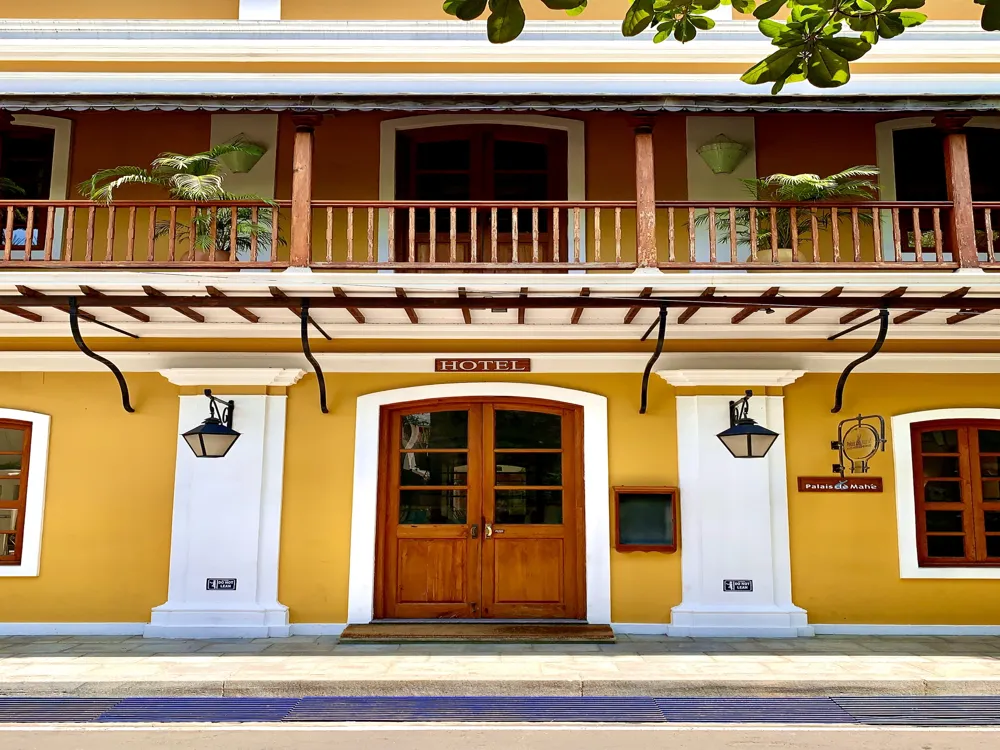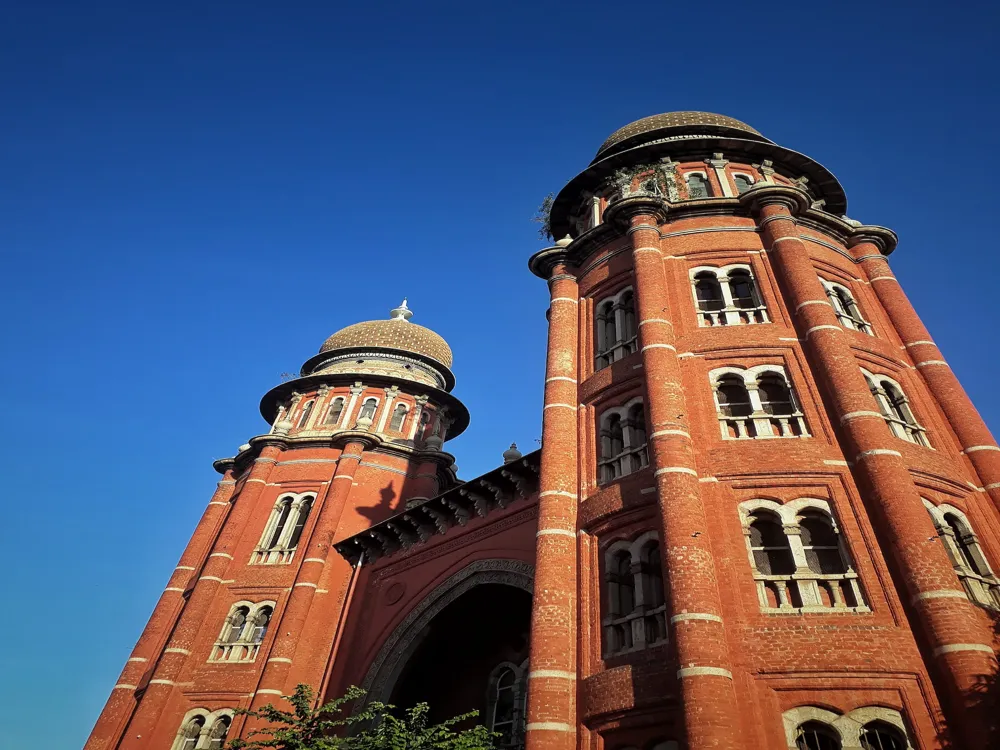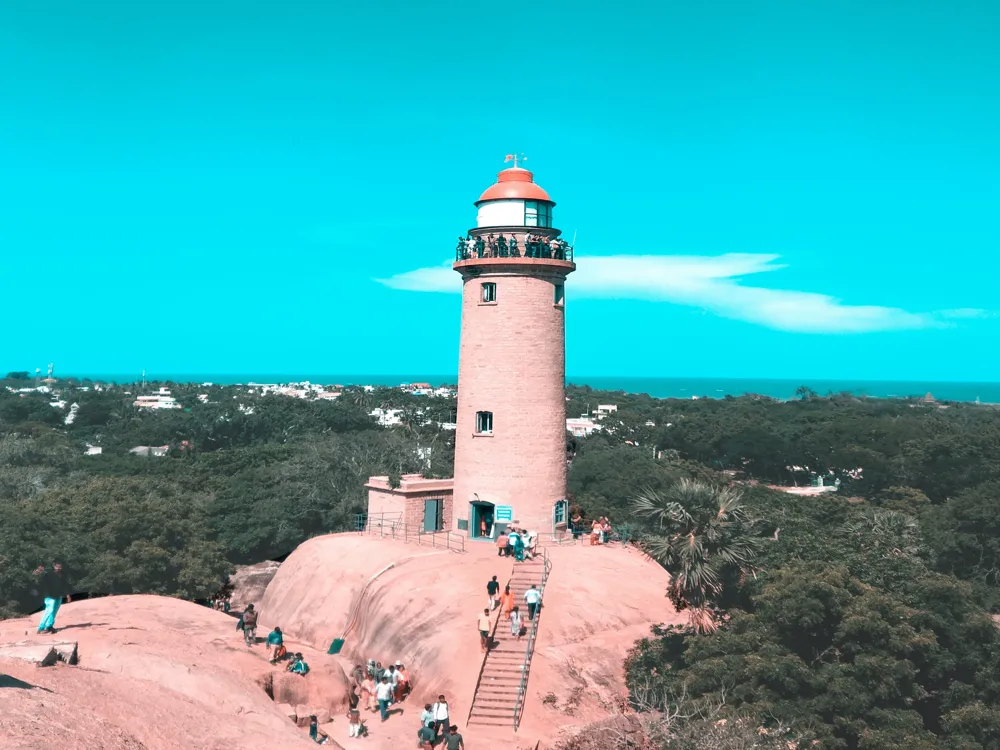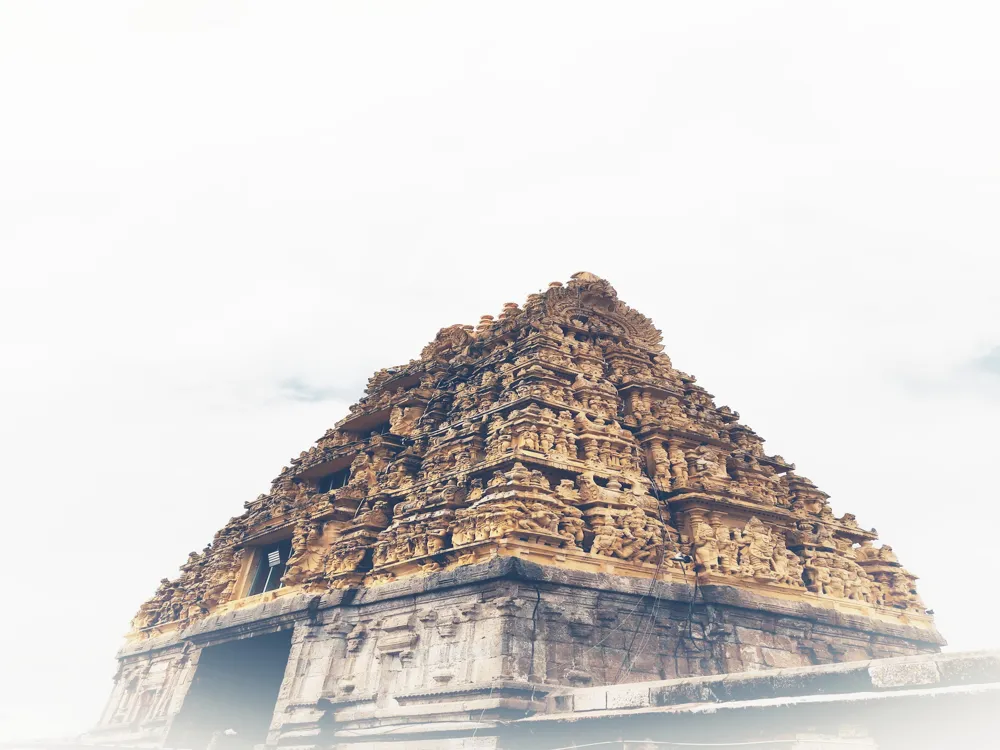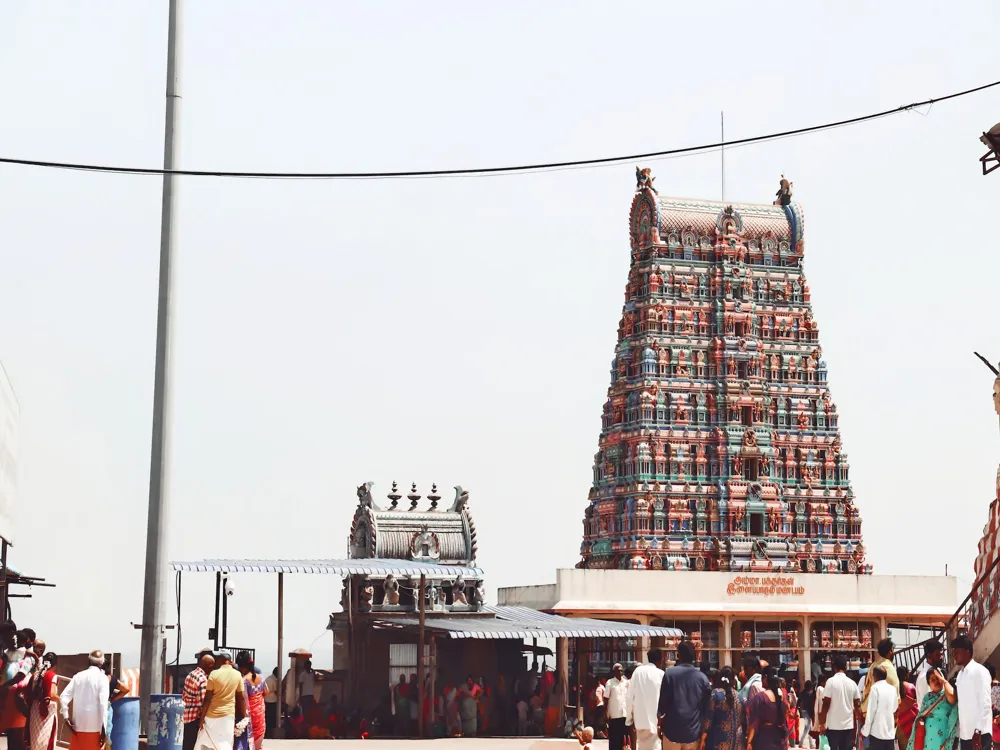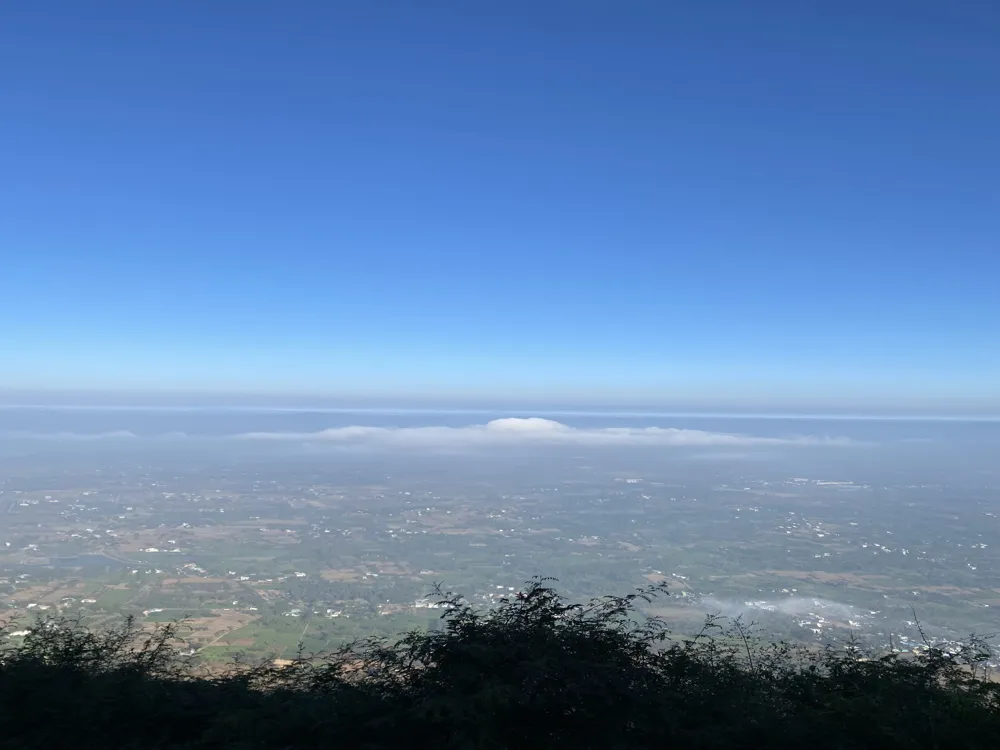Nestled in the vibrant town of Kanchipuram in Tamil Nadu, the Devarajaswami Temple stands as a magnificent testament to the rich cultural and spiritual heritage of India. This ancient Hindu temple, dedicated to Lord Vishnu, is not just a place of worship but a symbolic representation of the glorious past of the region. Kanchipuram, known as the 'City of Thousand Temples', is famed for its sacred edifices, and the Devarajaswami Temple is undoubtedly one of its jewels. The temple's history is steeped in myths and legends, dating back to several centuries. It is believed that the Devarajaswami Temple was commissioned by the Cholas, one of the longest-ruling dynasties in southern India. Over the years, it underwent numerous enhancements and renovations under the patronage of different rulers, particularly the Vijayanagara kings, who added many intricate structures and embellishments, further enhancing its splendor. The temple complex is an embodiment of ancient Dravidian architecture, characterized by towering gopurams (gateway towers), expansive courtyards, and elaborately carved pillars. The main deity, Lord Vishnu, is revered here in his divine form as Devarajaswami. The temple is also home to the celebrated Athi Varadar, a unique idol carved out of the divine fig tree, which is ceremoniously displayed once every 40 years, attracting devotees from across the globe. Celebrations and festivals at the Devarajaswami Temple are a spectacle to behold, with the most prominent being the Brahmotsavam, attracting thousands of devotees. The vibrant processions, traditional rituals, and the spiritual ambiance during these festivals offer a glimpse into the deep-rooted traditions and religious fervor of the region. The Devarajaswami Temple is not just a spiritual haven but also a center for learning and culture. It has been a hub for Vedic studies and traditional arts for centuries, contributing significantly to the preservation and promotion of ancient Indian traditions and cultural practices. The Devarajaswami Temple is a masterpiece of Dravidian architecture, a style that evolved in South India and is characterized by its grandiose and intricate design. The temple's architecture is a harmonious blend of religious significance, artistic expression, and ancient engineering marvels, making it a significant landmark in the architectural history of India. The temple's grandeur is first glimpsed through its imposing gopurams, which are adorned with an array of sculptures depicting various deities, mythological scenes, and cosmic elements. These towering structures, visible from a distance, serve as gateways to the divine realm. The main gopuram, towering majestically, is an iconic symbol of Kanchipuram's skyline. The temple complex is spread over a vast area and is divided into multiple courtyards, each serving a specific purpose. The outer courtyard is more than just an entrance; it is a space where the mundane meets the divine. Here, one can witness a seamless blend of daily life and devotion, with local artisans selling religious artifacts and devotees preparing for worship. As one proceeds to the inner sanctum, the air of spirituality becomes more palpable. The sanctum sanctorum houses the main deity, Lord Devarajaswami, in a majestic setting. The idol, enshrined under a gold-plated dome, emanates a sense of divine presence, leaving devotees in awe. The temple's pillars and walls are embellished with exquisite carvings that narrate stories from ancient scriptures, legends, and the lives of saints. These sculptures are not just artistic expressions but also serve as a medium of imparting moral and spiritual lessons to the devotees. One of the architectural highlights of the Devarajaswami Temple is the 100-pillared hall, renowned for its ornate columns and exquisite sculptures. This hall exemplifies the pinnacle of Vijayanagara architecture and is often used for religious gatherings and cultural events. The temple's water tank, known as the Anantha Saras, adds to the spiritual ambiance. It is believed that taking a dip in these holy waters can cleanse one of their sins. The tank is also central to many temple rituals and is an integral part of the temple's architectural and spiritual landscape. The architectural design of the Devarajaswami Temple reflects a deep understanding of astronomy, with the placement of structures aligned with celestial bodies. This alignment is not just for aesthetic purposes but also holds religious significance, as it is believed to harness cosmic energies. The temple's architecture, thus, is a blend of devotion, art, and science, making it a must-visit destination for those interested in history, architecture, and spirituality. Visitors are expected to adhere to a modest dress code, typically traditional Indian attire. It's advised to avoid wearing shorts or sleeveless tops. Additionally, maintaining a quiet and respectful demeanor within the temple premises is essential. The temple is open at specific hours, usually early morning and late afternoon. Checking the temple timings before visiting is recommended. Plan your visit during festivals for a unique experience, but be prepared for larger crowds. Photography might be restricted in certain areas of the temple. Always look for signs or ask a temple official before taking pictures to ensure compliance with temple regulations. Opting for a guided tour can enhance your visit, providing insights into the temple's history, architecture, and rituals. Local guides are often available at the entrance. Engaging with locals respectfully and following their customs, especially during rituals and offerings, can enrich your experience. It's also a gesture of respect towards the local culture and traditions. Kanchipuram is well-connected by road and rail. The nearest airport is in Chennai, about 72 km away. From Chennai, you can hire a taxi or take a bus to Kanchipuram. Within Kanchipuram, auto-rickshaws and local buses are available to reach the Devarajaswami Temple. For those driving, ample parking space is available near the temple premises. Read More:Overview of Devarajaswami Temple, Kanchipuram, Tamil Nadu
Architecture of Devarajaswami Temple
Tips When Visiting Devarajaswami Temple
Dress Code and Conduct
Timing and Festivals
Photography Restrictions
Guided Tours
Local Etiquette
How To Reach Devarajaswami Temple
Devarajaswami Temple
Kanchipuram
Tamil Nadu
NaN onwards
View kanchipuram Packages
Weather :
Tags : Temple
Time Required : Around 1 hour
Planning a Trip? Ask Your Question
Kanchipuram Travel Packages
View All Packages For Kanchipuram
Top Hotel Collections for Kanchipuram

Private Pool

Luxury Hotels

5-Star Hotels

Pet Friendly
Top Hotels Near Kanchipuram
Other Top Ranking Places In Kanchipuram
View All Places To Visit In kanchipuram
View kanchipuram Packages
Weather :
Tags : Temple
Time Required : Around 1 hour
Planning a Trip? Ask Your Question
Kanchipuram Travel Packages
View All Packages For Kanchipuram
Top Hotel Collections for Kanchipuram

Private Pool

Luxury Hotels

5-Star Hotels

Pet Friendly










